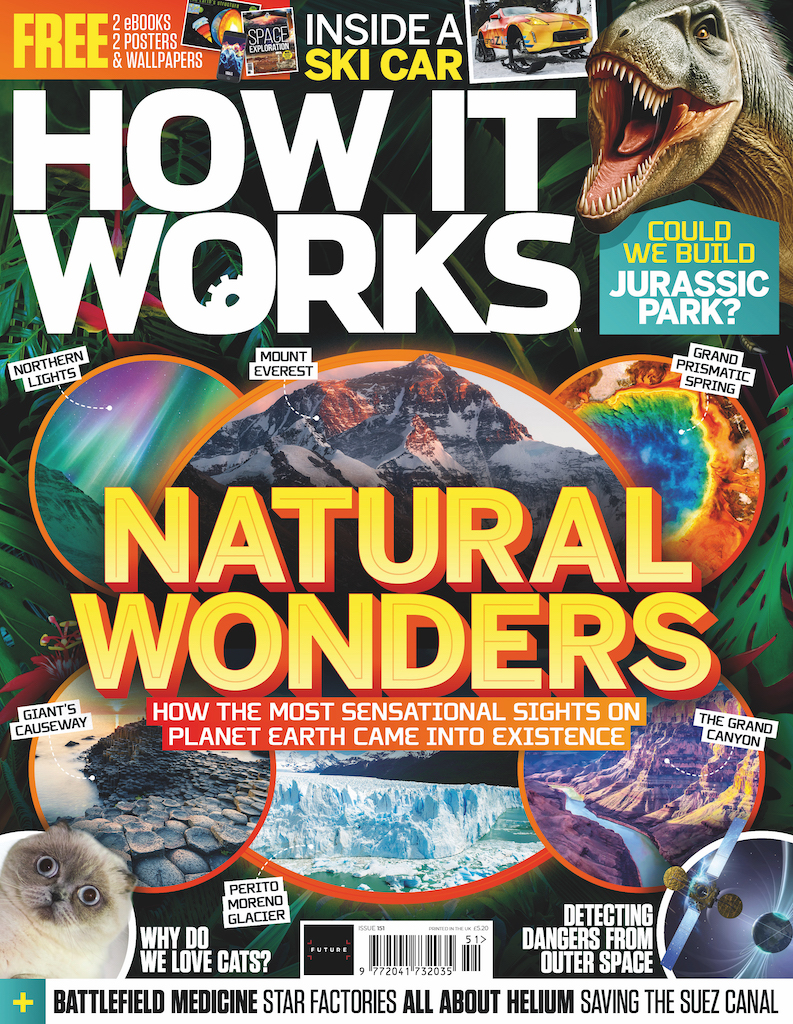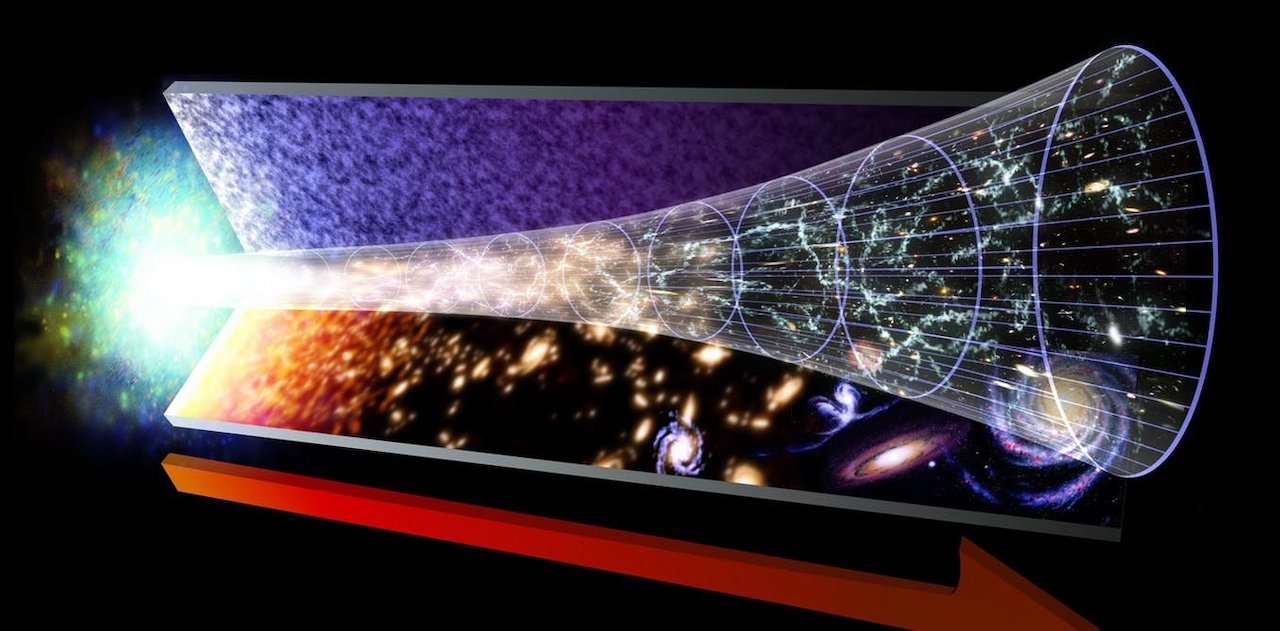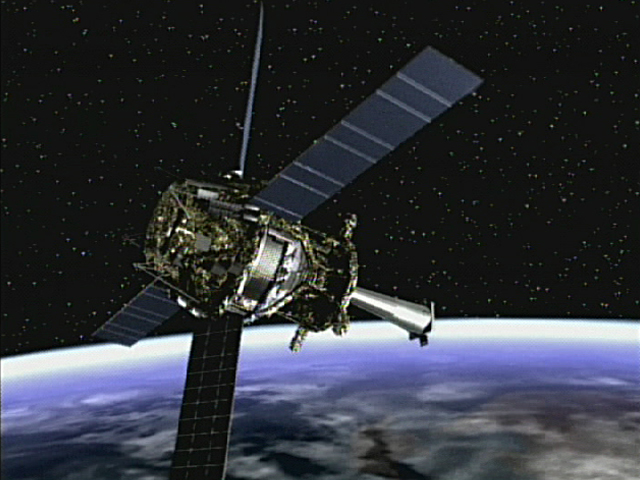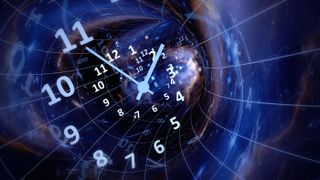When considering time, it's easy to quickly get lost in the complexity of the topic. Time is all around us — it's ever-present and is the basis of how we record life on Earth. It's the constant that keeps the world, the solar system and even the universe ticking.
Civilizations have risen and fallen, stars have been born and extinguished, and our one method of keeping track of every event in the universe and on Earth has been comparing them to the present day with the regular passing of time. But is it really a constant? Is time really as simple as a movement from one second to the next?
Some 13.8 billion years ago, the universe was born, and since then time has flown by to the present day, overseeing the creation of galaxies and the expansion of space. But when it comes to comparing time, it's daunting to realize just how little of it we have actually experienced.
Earth might be 4.5 billion years old, but modern humans have inhabited the planet for around 300,000 years — that's just 0.002% the age of the universe. Feeling small and insignificant yet? It gets worse. We have experienced so little time on Earth that in astronomical terms we're entirely negligible.
In the 17th century, physicist Isaac Newton saw time as an arrow fired from a bow, traveling in a direct, straight line and never deviating from its path. To Newton, one second on Earth was the same length of time as that same second on Mars, Jupiter or in deep space. He believed that absolute motion could not be detected, which meant that nothing in the universe had a constant speed, even light. By applying this theory, he was able to assume that if the speed of light could vary, then time must be constant. Time must tick from one second to the next, with no difference between the length of any two seconds. This is something that it's easy to think is true. Every day has roughly 24 hours; you don't have one day with 26 and one with 23 hours.
How It Works

This article is brought to you by How It Works.
How It Works is the action-packed magazine that's bursting with exciting information about the latest advances in science and technology, featuring everything you need to know about how the world around you — and the universe — works.
However, in 1905, Albert Einstein asserted that the speed of light doesn't vary, but rather it is a constant, traveling at roughly 186,282 miles per second (299,792 kilometers per second). He postulated that time was more like a river, ebbing and flowing depending on the effects of gravity and space-time. Time would speed up and slow down around cosmological bodies with differing masses and velocities, and therefore one second on Earth was not the same length of time everywhere in the universe.
Related story: What is space-time?
This posed a problem. If the speed of light was really a constant, then there had to be some variable that altered over large distances across the universe. With the universe expanding and planets and galaxies moving on a humongous scale, something had to give to allow for these small fluctuations. And this variable had to be time.
It was ultimately Einstein's theory that was not only believed to be the truth, but also proven to be entirely accurate. In October 1971, two physicists named J.C. Hafele and Richard Keating set out to prove its validity. To do this, they flew four cesium atomic clocks on planes around the world, eastward and then westward.
According to Einstein's theory, when compared with ground-based atomic clocks — in this instance at the U.S. Naval Observatory in Washington, D.C. — Hafele and Keating's airborne clocks would be about 40 nanoseconds slower after their eastward trip, and about 275 nanoseconds faster after traveling west, due to the gravitational effects of the Earth on the velocity of the planes, according to their 1972 study in the journal Science. Incredibly, the clocks did indeed register a difference when traveling east and west around the world — about 59 nanoseconds slower and 273 nanoseconds faster, respectively, when compared with the U.S. Naval Observatory. This proved that Einstein was correct, specifically with his theory of time dilation, and that time did indeed fluctuate throughout the universe.
What happens during time dilation?
What does the theory of special relativity mean in terms of time? Check out our explanation of special relativity first to truly get a grasp of time dilation.
Newton and Einstein did agree on one thing, though — that time moves forward. So far, there is no evidence of anything in the universe that is able to dodge time and move forwards and backward at will. Everything ultimately moves forward in time, be it at a regular pace or slightly warped if approaching the speed of light. But why does time tick forward? Scientists aren't certain, but they have several theories to explain time's one-track "mind." One of these brings in the laws of thermodynamics, specifically the second law. This states that everything in the universe wants to move from low to high entropy, or from uniformity to disorder, beginning with simplicity at the Big Bang and moving to the almost random arrangement of galaxies and their inhabitants in the present day. This is known as the "arrow of time," or sometimes "time's arrow," likely coined by British astronomer Arthur Eddington in 1928, analytic philosopher Huw Price said at Séminaire Poincaré in 2006.
Eddington suggested that time was not symmetrical: "If as we follow the arrow, we find more and more of the random element in the state of the world, then the arrow is pointing towards the future; if the random element decreases, the arrow points towards the past," he wrote in "The Nature of the Physical World" in 1928. For example, if you were to observe a star in almost uniformity, but later saw it explode as a supernova and become a scattered nebula, you would know that time had moved forward from equality to chaos.
Another theory suggests that the passage of time is due to the expansion of the universe. As the universe expands, it pulls time with it, as space and time are linked as one; but this would mean that if the universe were to reach a theoretical limit of expansion and begin to contract, then time would reverse — a slight paradox for scientists and astronomers. Would time really move backward, with everything coming back to an era of simplicity and ending with a Big Crunch? It's unlikely we will be around to find out, but scientists can postulate on what might happen.
It's incredible to think of the progress humanity has made in our understanding of time over the past century. From ancient time-telling sundials to modern atomic clocks, we can even track the passing of a second more closely than ever before. Time remains a complex topic, but thanks to scientific visionaries, we are getting closer to unlocking the secrets of this not-so-constant universal constant.

The importance of Einstein's theory of special relativity
Einstein's theory of special relativity relies on one key fact: The speed of light is the same no matter how you look at it. To put this into practice, imagine you are traveling in a car at 20 mph (32 km/h), and you drive past a friend who is standing still. As you pass them, you throw a ball out in front of the car at 10 mph (16 km/h).
To your friend, the ball's speed combines with that of the car, and so appears to be traveling at 30 mph (48 km/h). Relative to you, however, the ball travels at only 10 mph, as you are already traveling at 20 mph.
Now imagine the same scenario, but this time you pass your stationary friend while traveling at half the speed of light. Through some imaginary contraption, your friend can observe you as you travel past. This time you shine a beam of light out of the car windscreen.
In our previous calculation we added together the speed of the ball and the car to find out what your friend saw, so in this instance, does your friend see the beam of light traveling at one-and-a-half times the speed of light?
According to Einstein, the answer is no. The speed of light always remains constant, and nothing can travel faster than it. On this occasion, both you and your friend observe the speed of light traveling at its universally agreed value at roughly 186,282 miles per second. This is the theory of special relativity, and it’s very important when talking about time.
Time: The fourth dimension of the universe
It was once thought that space and time were separate, and that the universe was merely an assortment of cosmic bodies arranged in three dimensions. Einstein, however, introduced the concept of a fourth dimension — time — that meant that space and time were inextricably linked. The general theory of relativity suggests that space-time expands and contracts depending on the momentum and mass of nearby matter. The theory was sound, but all that was needed was proof.
That proof came courtesy of NASA's Gravity Probe B, which demonstrated that space and time were indeed linked. Four gyroscopes were pointed in the direction of a distant star, and if gravity did not have an effect on space and time, they would remain locked in the same position. However, scientists clearly observed a “frame-dragging” effect due to the gravity of Earth, which meant the gyroscopes were pulled very slightly out of position. This seems to prove that the fabric of space itself can be altered, and if space and time are linked, then time itself can be stretched and contracted by gravity.

How long is a second?
There are two main ways of measuring time: dynamic and atomic time. The former relies on the motion of celestial bodies, including Earth, to keep track of time, whether it’s the rotation time of a distant spinning star such as a pulsar, the motion of a star across our night sky or the rotation of Earth. However, a spinning star not withstanding, which can be hard to observe, these methods are not always entirely accurate.
The old definition of a second was based on the rotation of Earth. As it takes the sun one day to rise in the east, set in the west and rise again, a day was almost arbitrarily divided into 24 hours, an hour into 60 minutes and a minute into 60 seconds. However, Earth doesn’t rotate uniformly. Its rotation decreases at a rate of about 30 seconds every 10,000 years due to factors such as tidal friction. Scientists have devised ways to account for the changing speed of Earth’s rotation, introducing leap seconds,” but for the most accurate time you have to go even smaller.
Atomic time relies on the energy transition within an atom of a certain element, commonly caesium. By defining a second using the number of these transitions, time can be measured with an accuracy of losing a tiny portion of a second in a million years. The definition of a second is now defined as 9,192,631,770 transitions within a caesium atom, Scientific American reported.
Atomic clocks: The most accurate track of time
The most accurate clock in the universe would probably be a rotating star like a pulsar, but on Earth atomic clocks provide the most accurate track of time. The entire GPS system in orbit around Earth uses atomic clocks to accurately track positions and relay data to the planet, while entire scientific centers are set up to calculate the most accurate measure of time — usually by measuring transitions within a caesium atom.
Related story: More accurate clocks may add more disorder to the universe, scientists say
While most atomic clocks rely on magnetic fields, modern clocks are using lasers to track and detect energy transitions within caesium atoms and keep a more definite measure of time. Although caesium clocks are currently used to keep time around the world, strontium clocks promise twice as much accuracy, while an experimental design based on charged mercury atoms could reduce discrepancies even further to less than 1 second lost or gained in 400 million years.
